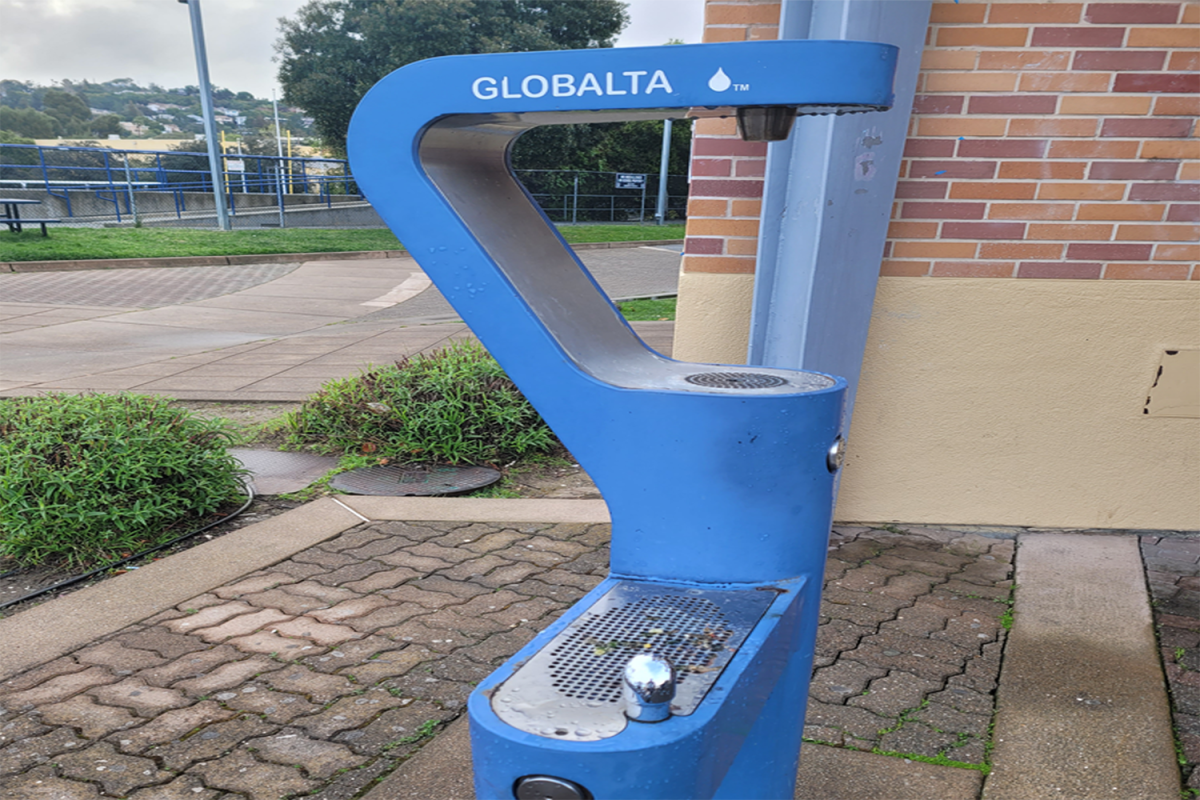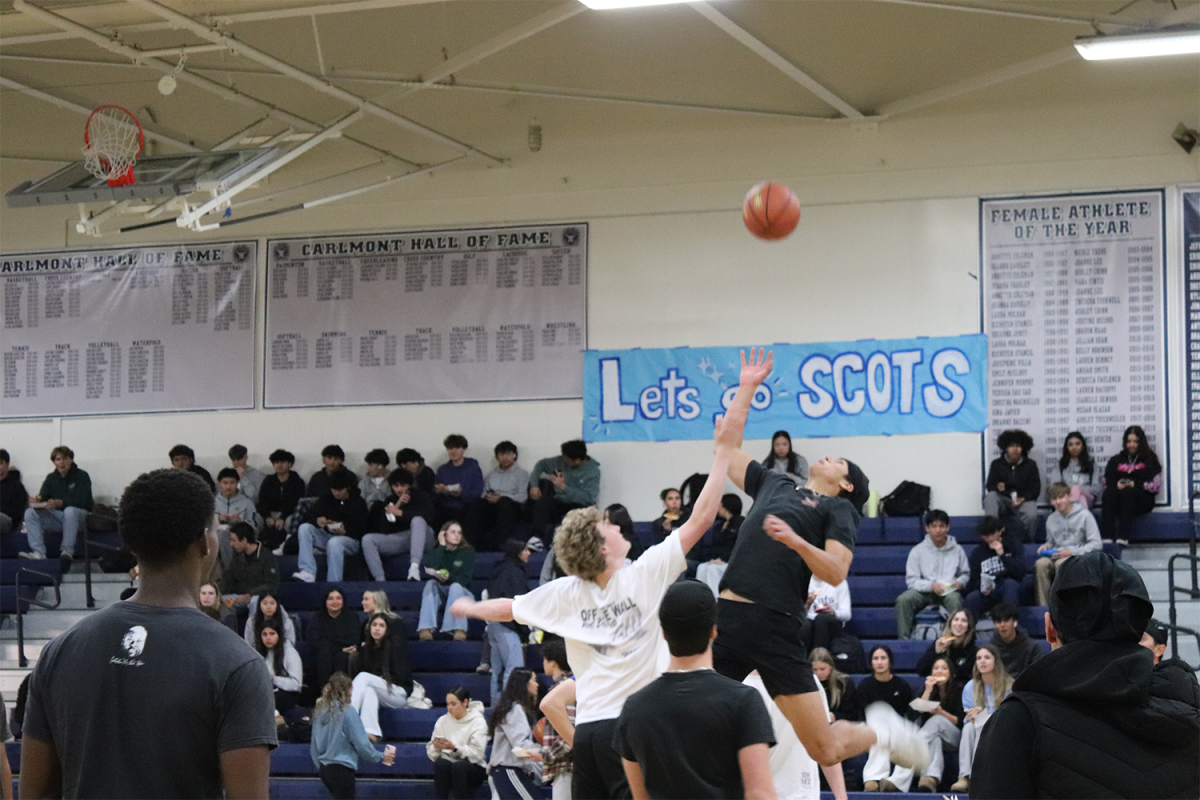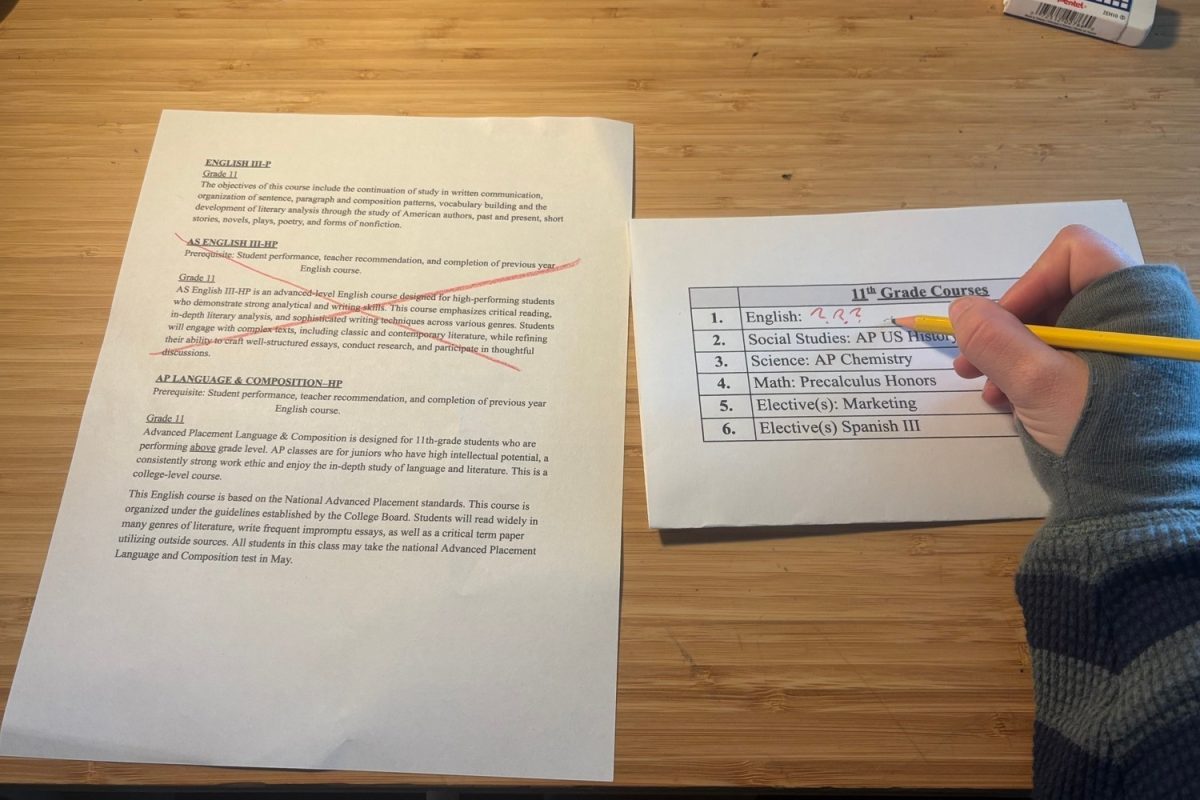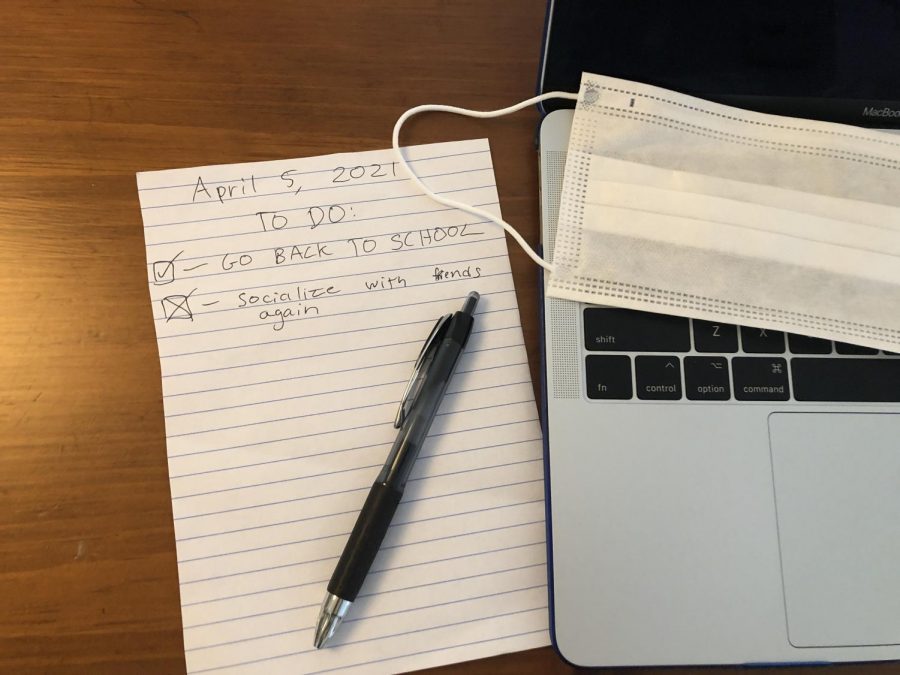With the return of in-person classes at Carlmont, the instrumental music department has received new protocols that will ensure ensembles are a safe space for students to create music again.
The issue with instrumental music during the COVID-19 pandemic is that many students must blow into their instruments to play and, subsequently, are essentially shooting their breath out through their instrument towards other people.
Carlmont Administration’s guidelines for in-person music ensembles this year state that students playing a wood or brass instrument, such as saxophone, flute, clarinet, or trumpet, must wear a mask and have a bell cover that the administration will be providing.
The accessories will be arriving soon, but until then ensembles are forced to play outside for the time being. Wind and brass players are able to take off their masks to play outside, while others keep must theirs on.
There were some initial concerns about whether the masks will affect a student’s embouchure — the way a musician puts their mouth on the mouthpiece. However, these rules that are set in place have been well-received by the department, as they succeed in protecting the students and teachers while allowing students to once again play as a full ensemble.
“Being outside and having masks on is a pretty good precaution,” said Lucas Fedronic, a junior who’s played in the Carlmont Jazz Band throughout his time at Carlmont. “While the masks could slightly hamper our playing, their faults are negligible as it allows for us to play together again.”
Fedronic is among the majority of students who are content with the new accommodations made for the instrumental groups since they do not seriously hinder their ability to play music.

However, there have been some concerns raised about just how effective the accessories will be.
Ethan Htun is a junior tenor saxophone player also in the Carlmont Jazz Band, who has some doubts about the capabilities of the special masks and bell covers to realistically provide a safe playing environment.
“For some instruments such as the trumpet, it will be far more effective since there are fewer valves where air escapes than, say, a saxophone, which functions by having air escape through multiple valves,” Htun said.
The main issue of effectiveness for specific instruments applies mostly to the differences between brass and woodwind instruments: brass instruments have only one single bell while woodwinds have extra valves in addition to the bell.
Despite the concerns over the new rules for the instrumental music department, the return to regular ensemble rehearsals is the highlight of the whole situation.
“Playing with the ensemble again feels really great,” Htun said. “Even with the precautions in place and everything, you can still feel the sense of community from before.”
The instrumental music department at Carlmont has always provided students with a community in their music classes, and if the restrictions ease over the course of the year, students may see the music classes return to their best from before the pandemic.
Brian Switzer, the head conductor and instrumental music director, is happy with how the ensembles can now meet physically and bring back that sense of community.
“It’s great seeing everyone talking and laughing again, and the music is already sounding more beautiful each day,” Switzer said.
















![One of the slides presented at the seminar shows how specific hallways will be designated as one-way or 2-way hallways. "In most cases, the one-way or one-directional hallway [is used] to minimize the crossing of students, but there are some hallways that are going to be two way," said Greg Patner, the administrative vice principal. "You can see some of those arrows are two-way arrows like near the football field, and then there's some that are one-way arrows to help students to navigate successfully around campus."](https://scotscoop.com/wp-content/uploads/2021/03/Screenshot-2021-03-17-4.14.19-PM-900x506.png)















